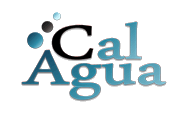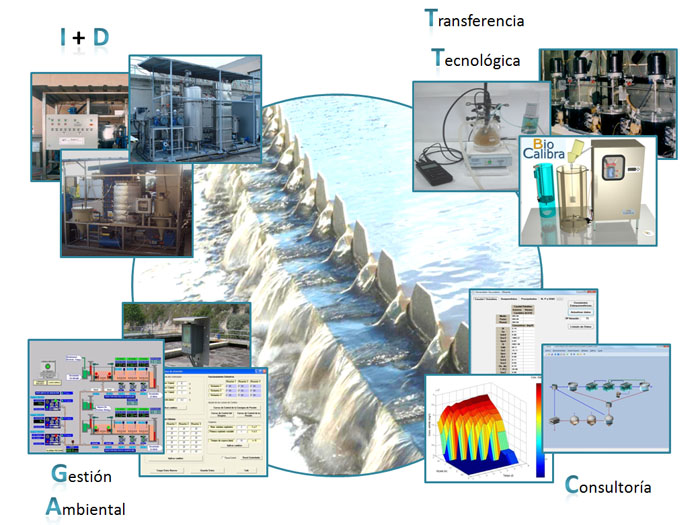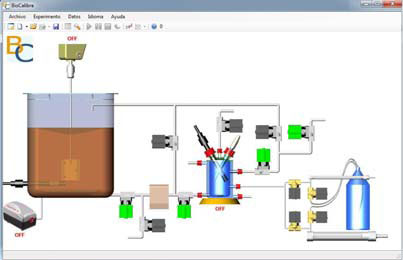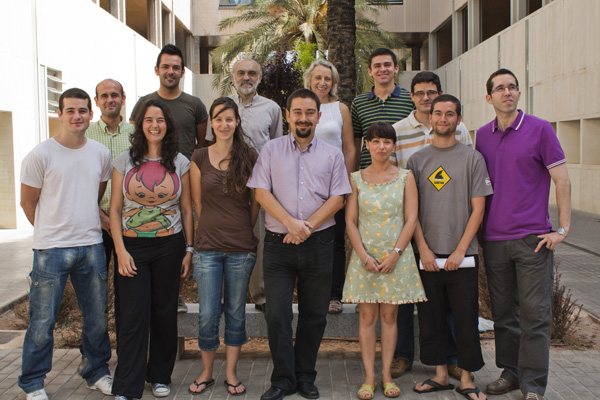
About us
The CalAgua research team, consisting of staff from the UPV (Polytechnic University of Valencia) Environmental and Water Engineering Institute and the UV (Valencia University) Chemical Engineering Department, has been working for two decades on the integrated physical, chemical and biological processes that take place in wastewater treatment plants (WWTP), i.e. the biological removal of nutrients, primary sludge fermentation, anaerobic sludge digestion, recovery of phosphorus in the form of struvite, the SHARON process using nitrite to strip nitrogen, membrane bioreactor applications for treating wastewater, and the use of micro-algae cultivation for removing nutrients.
Membrane bioreactors
Anaerobic membrane bio-reactor technology is an alternative to the traditional aerobic treatment of urban wastewater which reduces energy consumption and sludge generation. This line of research and technology transfer involved pilot-scale experiments using industrial membrane units and urban wastewater at ambient temperatures. The biological process parameters (cellular and hydraulic retention time) of stable biological treatment and maximum biogas production were analysed. The impact of operating parameters such as flow, the gas needed to maintain high permeability, back flush, relaxation, etc, were also studied to ensure that the energy used in the filtration process was managed effectively.
The experimental results of pilot-scale studies and tests on the biodegradability and kinetics of anaerobic processes are also being used to develop organic matter degradation models with a view to simulating anaerobic membrane bio-reactors. Along this line, membrane process modelling is being studied to build a system for controlling filtration processes and operating membranes with energy consumption. Fuzzy-logic control systems are also being studied on the basis of membrane yield data such as flows, permeability, reversible and non-reversible fouling rates between back flushes.
Part of this line of research, in which a more environmentally-friendly form of sustainable water treatment is being developed, consists of studying the processes by which nutrients and methane are removed from anaerobic membrane bio-reactor effluent. In the case of nitrogen and phosphorus removal, studies are under way to remove these nutrients by microalgae cultivation. Methanotrophic bacteria denitification is also being studied for use in removing dissolved methane, which acts as a source of carbon.
Our technology

SUSTAINABLE WATER MANAGEMENT
The main aims of this research group are to transfer research results to industry for immediate application and provide technical advice on the design, operating and optimization of water treatment plants. Most of the transferable results obtained by CalAgua have arisen from R+D projects financed by public funds and contracts with companies. This has enabled a variety of patents to be developed and marketed, including automatic calibration equipment for ASM model parameters (Biocalibra); a wastewater treatment (WWT) system using membranes; a WWT aeration control system based on fuzzy logic; and a nitrification-denitrification process control system.

BIOCALIBRA
Biocalibra is an automated calibration device developed by Calagua for determining the kinetic and stoichiometric parameters of the WWTP simulation models used most often by researchers. Biocalibra makes it possible to conduct, in a highly automated way, the tests necessary to calibrate the parameters that affect activated sludge models most. It also enables a wide range of experiments to be carried out to evaluate the performance of a given biological process, such as the biodegradability of wastewater, the presence of toxic compounds, and possible interference or impact on treatment processes. Biocalibra enhances the calibration process by reducing the analysis time needed and optimizing the necessary human and technical resources.
Members
Lines of research cover the environment, particularly water treatment and management, the main lines being biological wastewater treatment and water quality modelling. The group has developed software to deal with problems in both areas.
Head researchers are Aurora Seco (UV) y José Ferrer (UPV)




